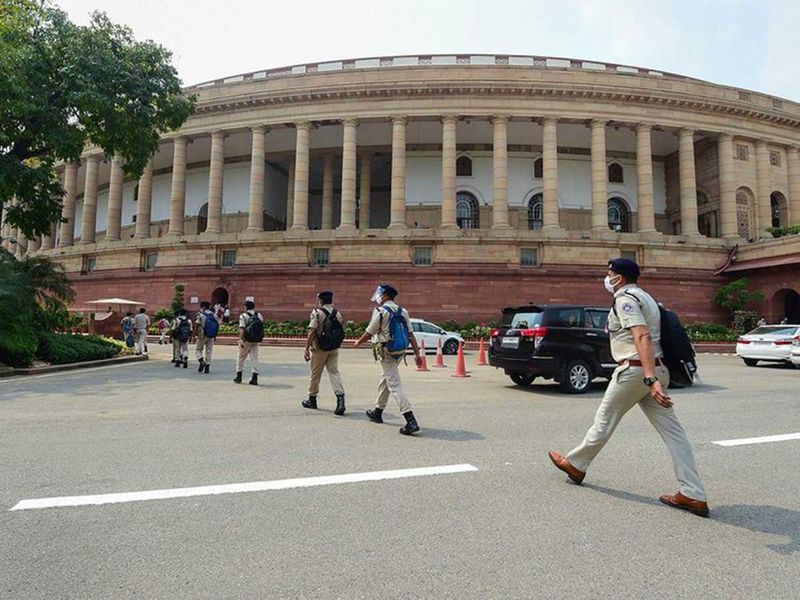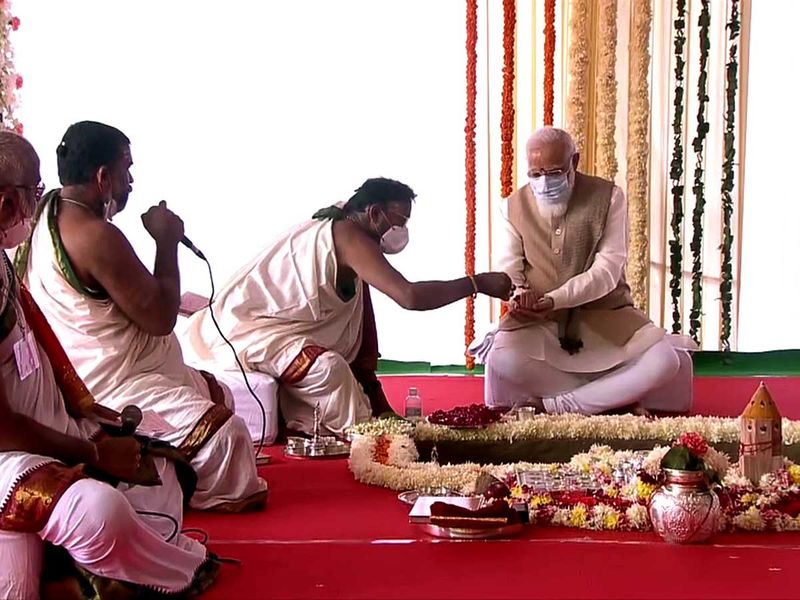
The ongoing Monsoon session of India’s Parliament has been acrimonious with a face-off between the government and opposition benches.
Notwithstanding the intense political back-and-forth inside the parliament, the mood outside the building is quite nostalgic.
As independent India’s first Parliament built by Indians comes up, a sense of recollection of history looms.
The buzz is that the current session may be the last one in this historic Parliament that was built during years 1921-27.
The foundation stone of the new Parliament building was laid in December 2020, and construction began January 2021. That is exactly a century after the construction of the old parliament building had begun (1921).
The present Parliament building was originally designed as ‘Council House’ for British India. Post-independence, it served as India’s Parliament House.
Although no final announcements have been made regarding the inauguration of new Parliament, both visitors and members of Parliament (MPs) are looking at the old building with a tint of loss.

The old grand building has been a mute witness to the making of modern and independent India. Since 1950s, all members of Lok Sabha (House of the People) and Rajya Sabha (Council of States) have profound memories linked to the building.
Inside the Parliament, leaders and their destinies were made and unmade over the years. Many powerful governments fell inside the house and endless issues of people, wars and peace were passionately debated.
The current members are seen taking selfies with the distinctive pillars in the background that make the circular building very unique.
This session has become a selfie session where MPs and media people want to preserve their memories of the building.
The impact of the under-construction new Parliament building is immense. The new Parliament building, the old Parliament building, Library and Annexe, and the proposed Chambers for Members of Parliament will form the Legislative Enclave. It will be an indelible part of the legacy of the Modi era.
One can see right in the compound of the colonial era edifice, the new parliament building’s concrete and steel structure. The final look will have red stone as its exteriors. Currently, red stone is being pasted on the columns of the new building.
The new Parliament building is designed by HCP Design Planning and Management, headed by architect Bimal Patel, and is being constructed by TATA Projects Limited.
The new historic building is expected to last for more than a century. The work at the site is going on at breakneck speed. Thousands of workers have been pressed in.
The entry to the construction site is prohibited unless one has a special pass, which is difficult to get, more so after the huge controversy over the installation of the national emblem atop the building. Critics find the facial expressions of the emblem’s lions “aggressive” which differs from original “protective” lions.
One of the most interesting things about the mega project is that the new parliament building will be linked to the old Parliament with the help of the iconic statue of Mahatma Gandhi.
A highly symbolic statue, which sits right opposite the main entrance, and is a key spot for MPs to protest, will soon be moved to its new location — to seamlessly connect the past and the future.
Work on the project is going on full speed to meet the deadline and have the new Parliament ready as India celebrates its 75th year of Independence.
Since the new building is the first purpose-designed Parliament for India, it will have numerous Indian elements.
One of the supervisors of the site claims that the building’s main purpose is to make everything functional. It’s not built to “excite” visitors and users.
The idea is to make sure that people do not get “overwhelmed” while entering the new building. The old Parliament, Rashtrapati Bhavan, South and North block were built by the British to show off their power over the people.
The Rajya Sabha Hall in the new Parliament building will have a capacity of 384 seats while the Lok Sabha Hall will have a capacity of 770 seats, expandable up to 1134 seats during joint sessions.
In the new Parliament, unfortunately the concept of the Central Hall, popular meeting place of MPs and media has been dispensed with. Instead the meeting place will open to sky with sitting arrangements created for the MPs.

Three restaurants have been planned for staffers, politicians, media and the visitors. The building will have several paintings, selected with the help of professionals from M.S. University in Baroda.
All spaces in the new Parliament building — including Lok Sabha and Rajya Sabha chambers — are fully accessible. Extraordinary care has been taken to make it is wheelchair friendly.
Interestingly both Rajya Sabha and Lok Sabha will have MPs sitting in a two-seater arrangement with modern facilities on the desk for delivering speech and voting.
A huge banyan tree is planted inside the courtyard and care has been taken to see that the interiors match with Indian colours, designs and materials.
The customised carpets the Parliament, which will have 120 knots per square inch, is being made by 900 weaver families from 25 villages in Badhoi district of Uttar Pradesh.
While the Lok Sabha’s theme colour is green with peacock as its motif, Rajya Sabha carpets and furniture will be red with lotus as its theme.
After the project is complete, the current Parliament building will go under renovation and will be appropriately retrofitted and refurbished as per Indian heritage conservation standards.
Government sources claim that both the buildings — old and new Parliament — will be a part of one huge complex and will be used in conjunction.
As India’s supreme legislative body gets set to move to a new home, it will never be the same in the old building. Those selfies being clicked in the current session may continue.









